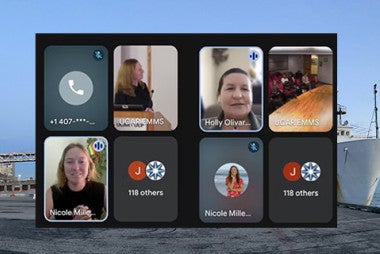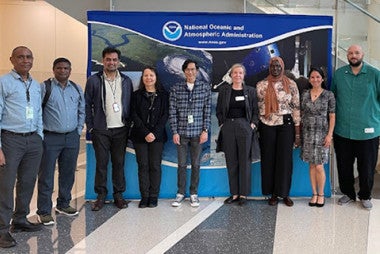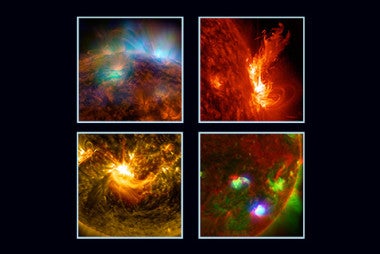WINGS Fellow Joseph Knisely aims to improve tropical cyclone forecasts
The Atlantic hurricane season begins on June 1, 2025. Early warnings and accurate forecasts issued by NOAA’s National Hurricane Center (NHC) are crucial to helping millions of people prepare, considering five hurricanes were responsible for $124 Billion in damages in 2024 alone. (Source.)
“Tropical cyclones are consequential and there are a lot of interesting problems related to data assimilation and their prediction,” says Joseph Knisely.

Joseph Knisely, Ph.D. candidate in atmospheric and oceanic science at the University of Maryland, Baltimore
Knisely is a Ph.D. candidate in atmospheric and oceanic science at the University of Maryland, Baltimore and was one of three graduate students selected in 2023 for the inaugural NOAA Weather Program Office (WPO) Innovation for Next Generation Scientists (WINGS) Ph.D. Dissertation Fellowship. The fellowship is supported by NOAA’s WPO and administered by the UCAR | Cooperative Programs for the Advancement of Earth System Science (CPAESS).
It’s not unusual for new forecast models to undergo development, testing, and refinement for many years before they are used operationally. NHC’s newest hurricane model, the Hurricane Analysis and Forecast System (HAFS), is no different. NHC began using HAFS operationally during the 2024 Atlantic hurricane season with impressive results.
According to the NHC, HAFS showed improvements in forecast accuracy over previous models with predictions for track improving by 8% and those for intensity, by 10% during a test period of three years (Source). Contributions from graduate student researchers like Knisely are a key part of the improvement process.
Knisely’s interests and subsequent research in the field have centered on problems related to data assimilation and tropical cyclone prediction using the HAFS model. One of the challenges, he notes, “is that because hurricanes form over the ocean in remote areas, models must rely on data from satellites.”
On land, direct measurements of temperature, moisture, and wind obtained from a vast network of weather stations combined with radar and satellite data are available to meteorologists as they prepare forecasts. Due to the lack of surface observations over the oceans; however, forecasters must rely on satellite radiances, or brightness temperatures, to derive atmospheric variables like temperature, moisture, and wind speed in order to use them in numerical weather prediction.
These data are collected from specialized sensors on NOAA’s polar-orbiting satellites that circle the Earth from pole-to-pole and have become critical for providing data that inform hurricane forecasts.
The derived measurements present a challenge because they are calculated from electromagnetic radiation values, or energy, emitted from the Earth. Knisely processes them by running a radiative transfer model that compares the satellite measurements to those in weather models. This process can result in observation errors or differences from actual measurements, therefore, before the measurements can be assimilated into a forecast model, they must be corrected. If left uncorrected, the errors can result in inaccurate hurricane forecasts.
“One goal of my HAFS work is to advance the science on satellite radiance bias correction and its importance to producing a forecast,” says Knisely. “In addition, I’m trying to highlight the importance of strong analysis and the value of having our own ensemble system – a system of multiple forecasts – within HAFS.”
Knisely’s WINGS Fellowship will conclude in one year, after which he hopes to continue his research in the public or private sector. “It seems that these subjects of observation bias correction and data assimilation are of interest and importance in both sectors,” he says.
The WINGS program continues a commitment and partnership between NOAA and UCAR | CPAESS that offers an opportunity for fellows to grow in their fields of study, contribute to forecast model development, and move into the scientific workforce.









